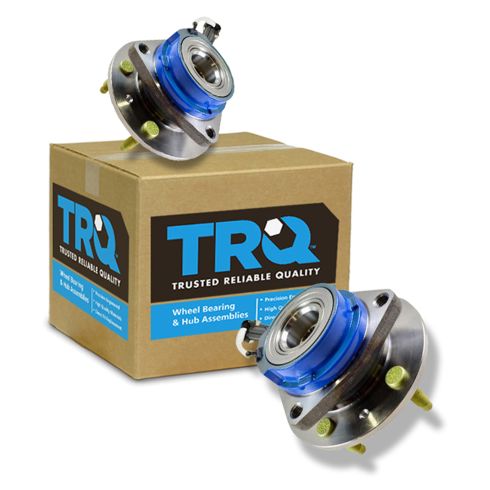1ASHS00337-Cadillac CTS STS Driver & Passenger Side 2 Piece Wheel Bearing & Hub Assembly Set TRQ BHA53480

Replaces
2011 Cadillac STS with 5 Lug Wheels Rear Driver & Passenger Side 2 Piece Wheel Bearing & Hub Assembly Set TRQ BHA53480

Product Reviews
Loading reviews
5.00/ 5.0
17
17 reviews
Great Parts
April 1, 2017
These bearings were as described and were direct fit. They restored the quite rid you expect in a Cadillac.
Great part at a great price
December 25, 2017
The hub assembly fit as described and fixed the issue I was having, I would recommend this part to any and all who are looking for a great priced part and wants great quality too. The electrical connector fit the factory end and sealed up the same as the factory connection. I would definitely recommend this part to all who are looking for a replacement part for their car.
perfect fit
May 4, 2018
I saw the installation video and it heloed me choose 1A for the part. excellent quality with a warranty. Thanks 1A for the help. My local store sells 1 hub assembly for 130 and here i got the pair for 80.
Quality parts
August 20, 2018
Put these on myself. Perfect fit and are working great!
Bearing and hubs
April 8, 2019
Thank you 1Aauto you nailed it again!
Great money saver
October 9, 2019
Great and cheap and great quality for my cadillac
Wheel bearings and hub assembly for my 06 Cadillac sts.
April 24, 2020
Awesome!!! Received my purchase quick, and installed with no complications. It was the right part for my Cadillac. Good quality part, for a good quality vehicle. "I'm Happy." Thank you, 1A Auto.
Perfect Fix, OEM Quality Part
September 21, 2020
Exact replacement. Good quality.
Simply the Best, Better Than all the rest
November 17, 2020
These parts are simply the best, better than all the rest
Better than anyones, quality is above the rest
I speak from the heart, My car is quite when I roll away
Recommend this part, baby, If you want value at a good expense
CTS Hubs
May 12, 2021
Easy ordering process,, Fast Shipping and Great price..
Great price
December 6, 2021
Parts where perfect and at a very good price, I recommend 1A auto for parts.
Excellent fit and thanks for the video, 1A Auto!
February 3, 2022
The part was a direct fit on my 06 CTS. The 1A Auto video on YouTube was very helpful in removing and installing this part. It tells you the tools you need and provides step by step on how to do it at home with mostly common tools (or tools you can rent from popular auto parts stores).
Hint: I didnt disconnect the parking brake cables and maneuvered the parking brake assembly out of the way. I also used a small air hammer to push in the axle shaft instead of tapping which also had the benefit of not having to use the hub puller due to the vibration loosening it.
Great part!
March 10, 2023
They work very well as if it's the original part.
Very happy. Will continue to buy my parts from 1A Auto
July 27, 2023
Bearings and video installation was right on. Great product, price and fast shipping.
Great all around
September 1, 2023
Great quality, quick delivery, easy install'n
1A Auto?The Best Auto Parts Store
May 25, 2024
Perfect fit. Highly recommend 1A Auto
August 23, 2024
This is the only company that I order parts from. Quality parts, guaranteed fit, and reasonable prices. Do yourself a favor and compare prices from your local parts company and 1 A auto. Shipping is fast. I highly recommend this company.
Customer Q&A
Do I need to repack this item?
June 22, 2017
10
No, these will be sealed with grease from our vendor and does not require repacking.
June 22, 2017
Alex P
10
No you don't.
June 22, 2017
Noe R
10
No you don't need to it comes fully assembled. I did my front ones all you need to do is swap them out with new ones.
June 22, 2017
Javier R
10
No they are sealed bearings.
June 23, 2017
Chris T
Does this fit a Cadillac CTS standard 2005 ?
January 5, 2019
10
This part is listed to fit the following:
Cadillac CTS Rear for Models with 5 Lug Wheels Wheel Bearing & Hub Assembly Pair TRQ
January 5, 2019
Peter L
did the bad bearings cause the service tire indicator to illuminate on the dash and your PSI values unreliable?
February 25, 2021
10
We recommend taking your vehicle to a local mechanic for an accurate diagnosis.
February 25, 2021
Andra M
Cadillac is a registered trademark of General Motors Company. 1A Auto is not affiliated with or sponsored by Cadillac or General Motors Company.
See all trademarks.











